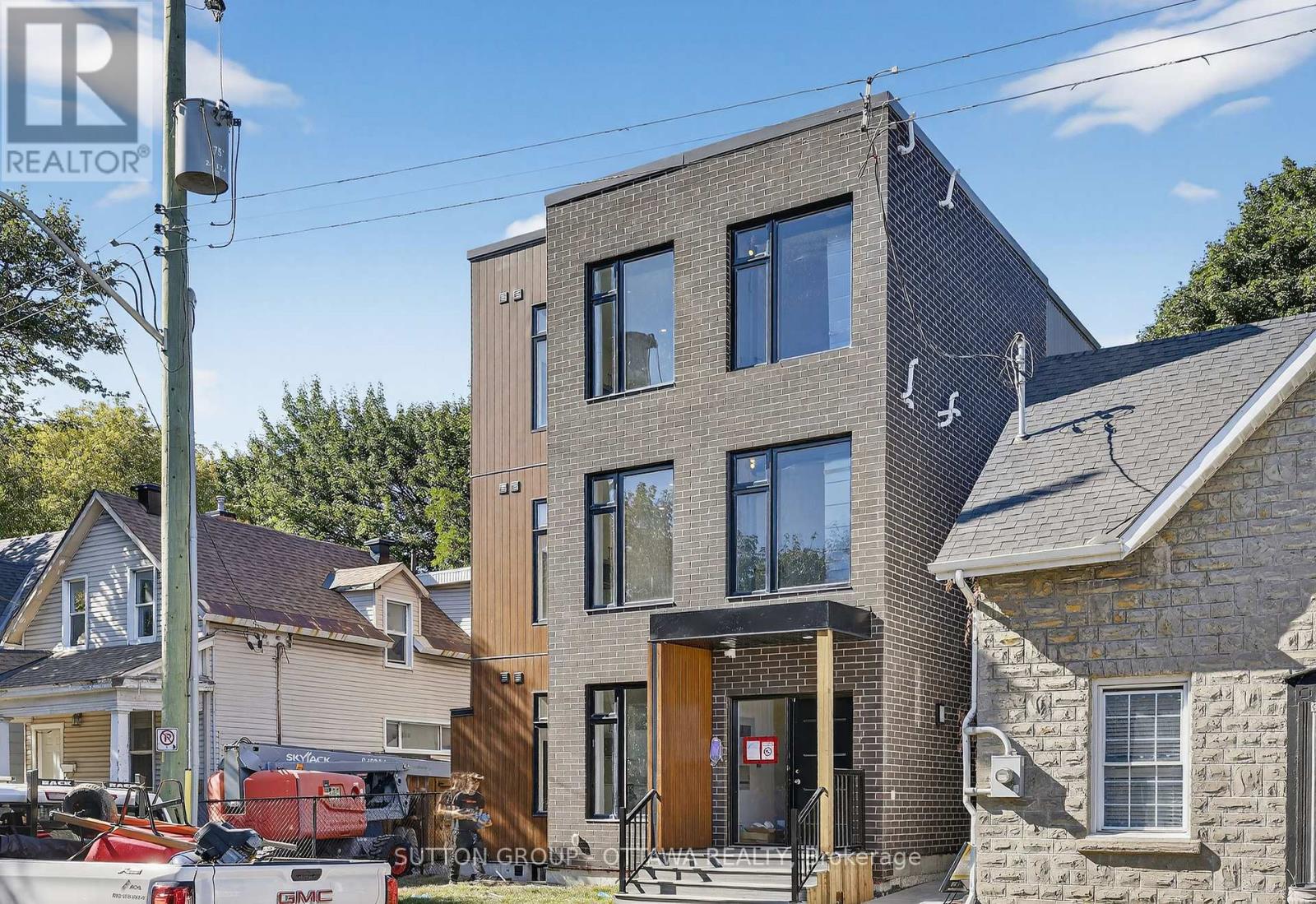This Little-Known Change Is Emerging as Ottawa's Most Strategic Asset Class
Ottawa's housing landscape is experiencing something fundamentally different. The simultaneous implementation of Bill 23 and the city's New Official Plan represents a wholesale reimagining of what's possible on residential land—a transformation that occurs perhaps once in a generation.
This isn't regulatory tinkering at the margins. Ontario's housing crisis demanded bold action, and the resulting policy framework has unlocked development rights across thousands of properties that were previously restricted to single-family use.
For investors and property owners who understand the implications, this creates an asymmetric opportunity. Land parcels continue trading at prices that reflect their historical use constraints, while the underlying entitlements now support 3-4 times the previous unit count.
This valuation gap—between current market pricing and redevelopment potential—won't persist indefinitely. As awareness spreads and comparable sales accumulate, the market will adjust.
Those who act during this transition period stand to capture substantial value.
Provincial Policy is Driving This Structural Change
Canadian municipalities are grappling with interconnected challenges: insufficient housing production, escalating development costs, and outdated zoning that prevents density where it's most needed. Ottawa's solution combines provincial mandate (Bill 23) with local planning innovation (the New Official Plan) to fundamentally restructure what can be built on residential land.
The scope is comprehensive rather than targeted. Instead of spot rezonings or pilot programs, the city has systematically reclassified residential zones across the urban area. The policy objectives are explicit:
- Enable "missing middle" housing forms—triplexes, fourplexes, townhomes—in neighborhoods historically limited to single homes
- Diversify housing supply beyond the traditional binary of detached houses or high-rise apartments
- Support multi-generational living arrangements and workforce housing needs
- Accelerate housing delivery by removing discretionary approval requirements
This represents a fundamental shift in municipal strategy.
Provincial legislation (Bill 23) provides the legal framework and removes financial barriers, while Ottawa's New Official Plan translates those permissions into actionable development rights.
Bill 23 achieved Royal Assent in November 2022, and the city's zoning updates are already in force.
The result: development permissions that were previously rare exceptions—requiring expensive rezoning applications and public hearings—are now standard entitlements available to any property owner.
This isn't an experimental policy with uncertain longevity; it's embedded in legislation with a multi-decade planning horizon.
What Changed Under Bill 23

The transformation is dramatic:
Unit Density: Any single-family home, townhouse, or semi-detached property can now be converted into up to 3 units as-of-right. Under new zoning, this will move to 4 units-as-of-right. This can take the form of:
- Three units within the existing structure, OR
- Main home + basement apartment + coach house (accessory dwelling unit)
In select locations under the New Official Plan—particularly properties on Major/Minor corridors, transit hubs, or within evolving neighbourhood designations—densities of 8-10 units are permitted, opening the door to small apartment buildings without the traditional barriers.
Eliminated Barriers:
- Development charges waived for missing middle projects (previously $40,000+ per additional unit)
- Site Plan Control removed for projects under 10 units (previously $100,000-$250,000 and 1-3 years of process). This has now expanded to 12 units and under.
- Parking minimums eliminated for residential properties, removing a common constraint on smaller lots
Height Allowances: Most urban neighbourhoods can now accommodate buildings up to 3 storeys (11 metres) as-of-right, enabling vertical expansion that was previously restricted.
The Market Hasn’t Caught on.. Yet
When zoning changes unlock significant new development capacity, real estate markets typically respond quickly—land values adjust upward to reflect enhanced rights. Ottawa's missing middle transition has followed a different pattern.
Despite properties now holding entitlements for 3-4 units (or more in certain locations), transaction prices largely reflect their continued use as single-family homes.
A house that legally supports a triplex still trades at "comparable" prices to neighboring properties where that conversion hasn't been considered.
This disconnect stems from multiple factors:
- Information asymmetry: Many homeowners don't yet understand their property's expanded rights under the new framework
- Lack of comparable sales: Real estate agents struggle to value missing middle potential when recent transactions don't reflect it
- Conservative appraisals: Lenders and appraisers default to existing use rather than highest-and-best-use valuations
- Implementation uncertainty: Some market participants remain cautious about acting on new permissions without seeing a precedent
The outcome is a temporary valuation inefficiency. Properties that could support multiple units—generating rental income and commanding higher prices based on that income potential—are priced as if those rights don't exist.
For investors who recognize this gap, the opportunity is straightforward: acquire assets at values reflecting their current single-family use, then unlock the embedded value by executing permitted conversions. As the market matures and missing middle projects become commonplace, this arbitrage will compress. But during this transition phase, the spread between acquisition cost and redevelopment value remains unusually wide.
Here’s How to Get First-Mover Advantage in this Transforming Market
Property owners and investors entering Ottawa's missing middle market during this early phase can capture value through multiple mechanisms:

1. Land Value Repricing
Real estate fundamentals suggest that land should be valued based on its highest and best use—the most profitable legal development that's physically possible and financially feasible. Under this principle, a lot that can support four rental units should command a higher price than one restricted to a single home.
Currently, that relationship is broken. Most properties trade at prices that ignore their enhanced density rights. As market participants become more sophisticated—as realtors develop valuation models for multiplex-capable lots, as appraisers recognize income-producing potential, as buyers bid up properties with superior entitlements—this will correct.
The repricing will likely be most pronounced in locations where:
- Transit infrastructure creates strong rental demand (LRT proximity, frequent bus service)
- Supply-demand imbalances are most acute (Ottawa's 1.1% overall vacancy rate, but lower in desirable neighborhoods)
- Lot assemblies are impractical (single-lot multiplex becomes only path to density)
Investors who acquire before this recalibration capture the full spread between "single-family comparable" pricing and "income property" valuation.
2. Enhanced Cash Flow Through Rental Income
The missing middle model creates immediate income potential:
With Ottawa's tight rental market (1.1% vacancy rate), well-designed units in established neighbourhoods command strong rents. The creation of additional units allows owners to:
- Live in one unit while rental income covers mortgage and expenses ("house hacking")
- Generate passive income streams that previously weren't permitted by zoning
- Build equity through both appreciation and principal paydown from tenant rents
3. Operational Efficiency and Execution Advantages
Missing middle projects offer superior execution characteristics compared to traditional multifamily development:
Scale and Speed:
- Projects complete in 12-18 months versus 3-5+ years for larger buildings
- Construction budgets of $250K-$500K are manageable for individual investors, not just institutional players
- Financing carry costs are proportionally lower due to shorter timelines
Regulatory Simplicity:
- No Site Plan Control requirement for projects under 10 units (eliminating $100K-$250K in consultant fees and 1-3 years of process)
- No rezoning applications or public hearings required
- Building permit process is straightforward residential construction
Capital Efficiency:
- Multiple exit strategies: stratify and sell units individually, sell as turnkey income property, or hold for rental cash flow
- Ability to phase execution (convert basement first, add coach house later) to manage capital deployment
- Smaller project size allows portfolio diversification across multiple properties rather than concentration risk
These operational advantages translate directly to superior risk-adjusted returns. Lower execution risk, shorter hold periods, and flexible exit options all improve the probability of achieving target returns.
The Window Is Closing
Multiple indicators suggest this entry window won't remain open indefinitely:
- Market education accelerating: Real estate industry conferences, investor seminars, media coverage are all increasing awareness of missing middle opportunities
- Comparable sales emerging: Early conversions are completing and transacting, providing valuation benchmarks that will inform future pricing
- Institutional capital arriving: Development firms and real estate funds are beginning systematic acquisition programs targeting these opportunities
- Price discovery occurring: Properties with superior characteristics (corridors, transit proximity, larger lots) already show pricing premiums in some neighborhoods
The most favorable entry conditions exist now—when the legal framework is settled, financing tools are mature, but broad market repricing hasn't yet occurred.
For investors with long time horizons and the ability to execute development, this represents an opportunity to acquire assets at a significant discount to their income-producing potential, then benefit from both cash flow and appreciation as the market adjusts to the new reality.
Next Steps: Property Assessment & Strategic Planning

Determining your property's potential under the new framework requires systematic analysis:
Confirm your property's specific designation under the New Official Plan (transect type, N1-N6 zone classification, permitted unit count and height). Use our Zoning Tool to get the changes for your property.
Ottawa General Contractors pioneered missing middle development in Ottawa and maintains established relationships with municipal planning staff.
We provide comprehensive property assessments including zoning analysis, preliminary design concepts, and financial modeling at no cost for qualified properties. Get in touch today to get an ROI analysis for your property.

.svg)





.jpg)
.jpg)


.jpg)
